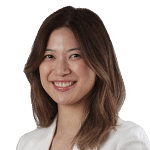SINGAPORE - The president of L’Oreal’s dermatological beauty division is optimistic about the department’s outlook, after a solid 2022 and a strong showing in the first quarter of 2023.
“Growth’s been accelerating in the past two years,” Mrs Myriam Cohen-Welgryn told The Straits Times on July 4.
She was in Singapore for the 25th World Congress of Dermatology conference, which was held at the Suntec Singapore Convention & Exhibition Centre from July 3 to July 8.
“I have great hope the growth will continue to be steady,” Mrs Cohen-Welgryn told ST.
L’Oreal Group recorded €38.26 billion (S$56.44 billion) in sales in 2022, up from €32.28 billion in 2021.
The dermatological beauty division contributed 13.4 per cent to total 2022 sales.
In terms of profitability by division as a percentage of division sales, dermatological beauty recorded the highest profit at 25.4 per cent, ahead of the group’s other divisions, including Luxe (22.9 per cent), professional products (21.3 per cent) and consumer products (19.8 per cent).
In the first quarter of 2023, dermatological beauty grew by 31 per cent.
And more growth is expected on the back of two trends, said Mrs Cohen-Welgryn.
Firstly, more consumers are opting for aesthetic procedures, after which they need specialist aftercare skin products.
And secondly, billions of people worldwide have skin affected by pathogens causing acne and eczema.
Ageing skin, added Mrs Cohen-Welgryn, is another area of growth for the division, as older skin is more susceptible to pathogens.
Other aggravating factors that affect the skin include pollution, increased UV rays resulting from climate change, and stress.

All these factors are increasing demand for L’Oreal dermatology division’s five brands: La Roche-Posay, CeraVe, Vichy Laboratoires, SkinBetter Science, and Skinceuticals.
La Roche-Posay, Vichy Laboratoires and Skinceuticals are available in Singapore, with the top product categories being against acne, sunscreen, and those that repair the skin barrier.
Prices range from $6.90 for Vichy Laboratoires’ Eau Thermale Thermal Spa Water to $350 for Skinceuticals’ A.G.E. Interrupter Advanced Corrective Cream.
Skin serums from La Roche-Posay and Vichy Laboratoires typically cost $83.
Prices are not cheap, but what makes up for it is product efficacy, said Ms Laetitia Toupet, international general manager of La Roche-Posay, during a media session at the conference.
She added that results can be seen from “as early as two to three days” from first usage and with “very long-lasting efficacy”.
The company prides itself on its clinical research and high efficacy of its products, many of which are prescribed or recommended by dermatologists, Mrs Cohen-Welgryn told ST.
In 2022, it invested about €1.1 billion into research and development.
The division’s brands are available in other countries in the region, including Thailand, Vietnam and Indonesia.
The company’s regional headquarters is in Singapore, where it also has a research and innovation centre.
“(The region) had tremendous growth. It was 40 per cent last year and has further accelerated,” said Mrs Cohen-Welgryn.
All regions where the firm operates recorded growth of more than 20 per cent in 2022, she added, with China being top performer in terms of performance versus market, as it saw six times the market growth.
Mrs Cohen-Welgryn could not share more details on performance due to the group’s current financial blackout period.
La Roche Posay and CeraVe are the top brands for the division in South-east Asia, with the former being the most prescribed brand (by dermatologists) in Indonesia within four years of entering the market.
“Four years is very short,” said Mrs Cohen-Welgryn.
“You have to build teams to go and talk to dermatologists, to show the clinical (studies) and products. It’s not like a mass market brand, (where) you create advertisements online and everyone knows you, and in one year you can have 60 per cent awareness.”
She identified India and Indonesia as two countries that will be big for the company in the future, though the firm is not yet present in India.
“A big part of (future growth) will come from emerging markets... Vietnam and Thailand are the big ones, and it’s happening now.”


